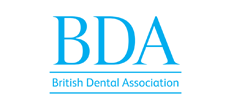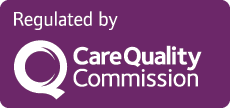It is quite natural to be nervous of dental treatment, we are very used to helping patients to cope, one step at a time. Conscious Sedation is our go-to solution for highly nervous patients, part of our painless dentistry treatment.
Whilst fear of the treatment is eased with painless dentistry, sedation is attractive to many, as a way to get around needle phobia, gag reflexes and invasive dental treatment. We believe that Conscious Sedation is a brilliant way of getting around all these fears.
Conscious Sedation is the Answer
We think it is one of the best solutions, but here is all the information you need to decide it is for you.
When thinking of dental sedation, some people can be either scared of the sedation itself. Whether being asleep or being conscious worries you, with Conscious Sedation, as the name suggests, you are neither awake nor are you put to sleep. Amazing but true.
How it works
The sedatives and painkillers administered completely relax you, to the point of being drowsy. At this point, although not quite asleep, you are completely unaware of both the numbing dental injections, called local anaesthetic (LA), and the actual treatment.
After the initial pain-less numbing, most people then fall into a natural sleep despite dental treatment continuing. No one has ever remembered anything about the treatment and yet, the major benefit of Conscious Sedation is that you are still able to respond to the dentist’s instructions, e.g. “please open your mouth” or “please bite down now” and you are always able to say if you are uncomfortable, you can stay in control.
Safe Treatment
Conscious Sedation is safe to administer outside the hospital setting and therefore you can have the treatment at the Dental Practice and the Dentist with which you are familiar and comfortable. You do not have to go to a hospital, and it is perfectly safe with a qualified practitioner, a doctor, without a consultant Anaesthetist.
You do not have to go to a hospital, and it is perfectly safe with a qualified practitioner, a doctor, without a consultant Anaesthetist. During the procedure, your oxygen saturation and pulse rate are monitored throughout with a pulse oximeter. A combination of painkillers and sedatives are titrated according to need and within safe doses.
There are always at least three professional people present to take care of your needs and we are there to make sure you are in a safe environment: A doctor (myself), the dentist and the dental nurse. When administering Conscious Sedation in the Dental Practice we always have emergency medication and equipment which we can proudly say we have never needed to use.
Conscious Sedation Risk Assessment
Because our focus is always on safety first, there might be some conditions which are unsafe outside a hospital setting and so everyone has a risk assessment by means of a medical history.
This involves screening for allergies, health problems and medication prescribed. Recreational drugs may also interfere with Conscious Sedation itself. It is therefore vital to be honest and open about your medical history to prevent unforeseen complications.
This will also give you a more pleasant experience and better dental treatment and sedation outcome.
What are the alternatives?
The alternatives to Conscious Sedation is either being awake for the Local Anaesthetic and treatment or being given a General Anaesthetic (GA) in hospital.
General Anaesthetic can only be administered in a hospital theatre (Operating Room) and is usually administered for major surgical procedures or operations. It involves being temporarily paralysed for the procedure and connected to a breathing machine.
The reason General Anaesthetic needs to be in a hospital is for to access more staff and drugs if things go wrong as there are many risks, and the responsibility usually falls on a Consultant Anaesthetist. A private hospital Anaesthetist is usually costly as the hospital theatre and Consultant Anaesthetist fees are high, so that is usually a big decision.
Who am I?
Dr Rudi Swart.
I see myself as a Medical Practitioner with a special interest in Sedation. Or in other words a Sedation Specialist. I have gained my sedation experience working as a senior doctor in A&E for over 15 years and since 2008 working in several well-known NHS Dental Sedation Referral Clinics in and around London. I expanded my sedation practice to the private sector in 2012 and have worked in many private dental clinics including Harley Street. I am on the Council for the ADA (Association for Dental Anaesthetists), a member of SAAD (Society for the Advancement of Anaesthesia in Dentistry) and a member of the SPS (Society for Paediatric Sedation). In 2016 I went to an international SPS conference in the US to share experiences in and learn more about children’s sedation.
I studied Medicine at the University of Stellenbosch in South Africa and graduated in 2000. My first two years as a medical doctor I worked in South Africa rotating through different hospital departments including Anaesthetics. I moved to the UK in 2003 and became interested in Emergency Medicine. As part of my daily duties, I taught medical students, nurses and junior doctors.
I have kept up to date with the Resus Council (UK) courses ALS, APLS and ATLS over the last 10 years. I started as an Honorary Lecturer in Sedation with University College London in 2014. Other interests have been working as a Ships Doctor on the Queen Mary II cruise ship and working for the Metropolitan Police as a Forensic Medical Examiner.
I am happy to answer any other questions or concerns you might have about sedation. Please call Winning Smiles or fill in the form below if you would like to know more.






